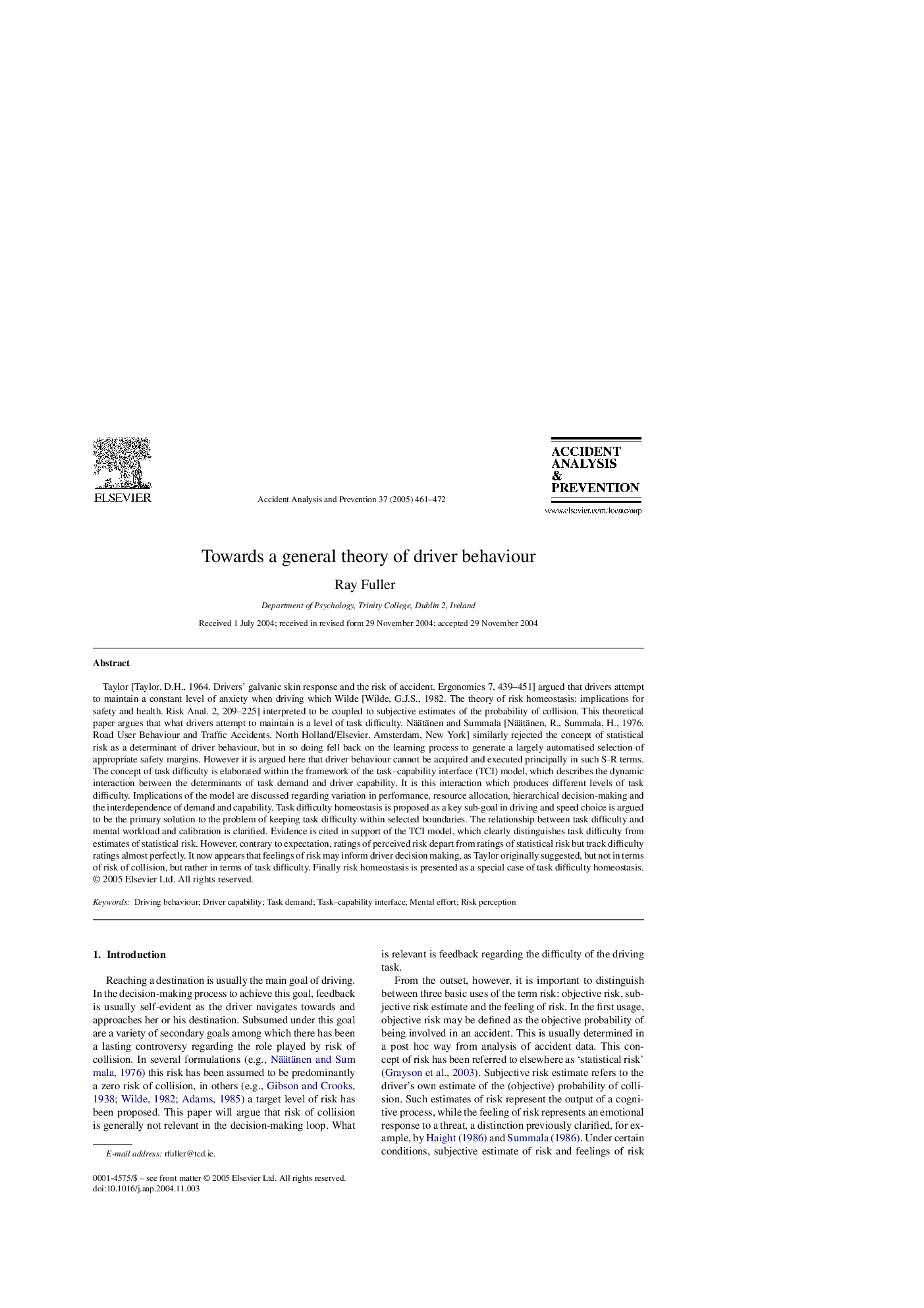| کد مقاله | کد نشریه | سال انتشار | مقاله انگلیسی | نسخه تمام متن |
|---|---|---|---|---|
| 10371498 | 877416 | 2005 | 12 صفحه PDF | دانلود رایگان |
عنوان انگلیسی مقاله ISI
Towards a general theory of driver behaviour
دانلود مقاله + سفارش ترجمه
دانلود مقاله ISI انگلیسی
رایگان برای ایرانیان
کلمات کلیدی
موضوعات مرتبط
مهندسی و علوم پایه
مهندسی شیمی
بهداشت و امنیت شیمی
پیش نمایش صفحه اول مقاله

چکیده انگلیسی
Taylor [Taylor, D.H., 1964. Drivers' galvanic skin response and the risk of accident. Ergonomics 7, 439-451] argued that drivers attempt to maintain a constant level of anxiety when driving which Wilde [Wilde, G.J.S., 1982. The theory of risk homeostasis: implications for safety and health. Risk Anal. 2, 209-225] interpreted to be coupled to subjective estimates of the probability of collision. This theoretical paper argues that what drivers attempt to maintain is a level of task difficulty. Näätänen and Summala [Näätänen, R., Summala, H., 1976. Road User Behaviour and Traffic Accidents. North Holland/Elsevier, Amsterdam, New York] similarly rejected the concept of statistical risk as a determinant of driver behaviour, but in so doing fell back on the learning process to generate a largely automatised selection of appropriate safety margins. However it is argued here that driver behaviour cannot be acquired and executed principally in such S-R terms. The concept of task difficulty is elaborated within the framework of the task-capability interface (TCI) model, which describes the dynamic interaction between the determinants of task demand and driver capability. It is this interaction which produces different levels of task difficulty. Implications of the model are discussed regarding variation in performance, resource allocation, hierarchical decision-making and the interdependence of demand and capability. Task difficulty homeostasis is proposed as a key sub-goal in driving and speed choice is argued to be the primary solution to the problem of keeping task difficulty within selected boundaries. The relationship between task difficulty and mental workload and calibration is clarified. Evidence is cited in support of the TCI model, which clearly distinguishes task difficulty from estimates of statistical risk. However, contrary to expectation, ratings of perceived risk depart from ratings of statistical risk but track difficulty ratings almost perfectly. It now appears that feelings of risk may inform driver decision making, as Taylor originally suggested, but not in terms of risk of collision, but rather in terms of task difficulty. Finally risk homeostasis is presented as a special case of task difficulty homeostasis.
ناشر
Database: Elsevier - ScienceDirect (ساینس دایرکت)
Journal: Accident Analysis & Prevention - Volume 37, Issue 3, May 2005, Pages 461-472
Journal: Accident Analysis & Prevention - Volume 37, Issue 3, May 2005, Pages 461-472
نویسندگان
Ray Fuller,